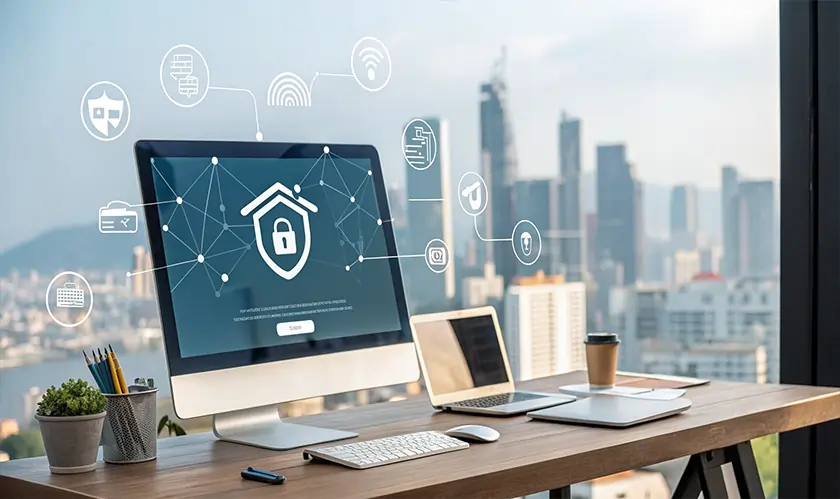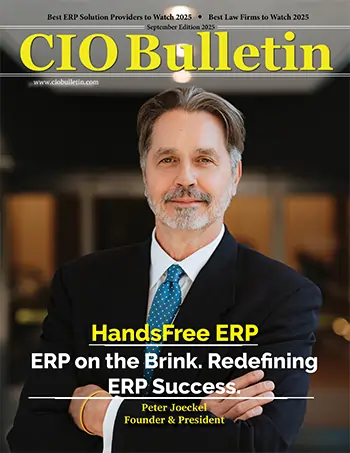Home Technology Security How Modern Security Defends Re...
Security

CIO Bulletin
03 October, 2025
Remote and hybrid work models are no longer temporary adjustments but have become the foundation of modern enterprises. The rapid adoption of cloud applications, digital workflows, and virtual collaboration has given businesses new flexibility and global reach. However, this shift has also opened the door to an expanded set of cyber risks. Employees now access sensitive corporate data from home networks, personal devices, and even public Wi-Fi, exposing organizations to vulnerabilities they may not have faced within traditional office boundaries.
The challenge is clear: while remote work boosts productivity and resilience, it also creates more points of attack for cybercriminals. Modern security strategies must evolve to secure these distributed environments, ensuring business continuity without compromising user experience.
The risks associated with remote environments are significantly different from those within corporate networks. Home Wi-Fi setups are often poorly secured, making them easy targets for attackers. Phishing and social engineering schemes have also surged, with remote workers receiving fraudulent emails designed to trick them into disclosing credentials.
Bring Your Own Device (BYOD) policies, though convenient, further complicate security. Personal devices typically lack enterprise-grade protection, increasing exposure to malware and ransomware. Additionally, cloud-based collaboration platforms such as Zoom, Microsoft 365, and Google Workspace, while essential for remote productivity, present risks if not properly monitored or configured.
Modern security frameworks rely on principles that move beyond traditional perimeter defenses. Zero Trust stands at the forefront, promoting the philosophy of “Never trust, always verify.” In this model, no user or device is trusted by default, regardless of location, and verification is required at every step.
Defense-in-depth strategies are equally critical. By layering multiple lines of defense-from access controls to encryption and intrusion detection-organizations reduce the chances of a single vulnerability leading to a successful breach. Another key principle is identity-first security, where verifying the legitimacy of users and their devices becomes the foundation for granting access.
At this stage, it is clear that Zero Trust Network Access boosts cybersecurity by ensuring users only gain access to the applications and data they need, under strict verification measures. This model replaces broad network-level permissions with application-level control, minimizing opportunities for attackers to move laterally within systems.
Modern remote security relies on a set of advanced tools and frameworks. Multi-factor authentication (MFA) is one of the simplest yet most powerful safeguards, requiring employees to confirm their identity through additional factors like biometrics or security tokens.
Endpoint Detection and Response (EDR) solutions add another layer of defense by monitoring laptops, smartphones, and IoT devices in real time, detecting anomalies and isolating compromised endpoints.
Secure Access Service Edge (SASE) integrates networking and security into a cloud-native model, streamlining security management for enterprises with distributed users. Alongside SASE, ZTNA ensures that employees, contractors, and partners only receive the minimum access they require, based on their role, device security posture, and context.
Cloud-specific protections, such as Cloud Access Security Brokers (CASB), provide visibility into SaaS application usage, ensuring policies are enforced consistently. Encryption and data loss prevention (DLP) systems safeguard sensitive information, preventing unauthorized disclosure or leaks.
Collaboration platforms have become lifelines for businesses, but they also present unique security challenges. For instance, unmonitored file-sharing features in Microsoft 365 or Slack could lead to unauthorized data transfers. Security teams must implement strong access policies to control who can share, download, or view sensitive documents.
Shadow IT, when employees use unapproved applications-further complicates visibility. Organizations must proactively monitor app usage, ensuring compliance with internal security policies while enabling productivity.
The growing complexity of remote environments makes human-only monitoring impractical. Artificial Intelligence (AI) and automation now play vital roles in identifying suspicious activity and mitigating threats at scale. AI systems can detect unusual login attempts, spot phishing attempts, and even recognize malicious patterns hidden within normal traffic.
Automation ensures rapid response. If a device is flagged as compromised, automated protocols can isolate it from the network before attackers exploit it further. Predictive threat intelligence, powered by machine learning, enables enterprises to prepare for emerging threats before they escalate. For context, the World Economic Forum highlights how AI is transforming global cybersecurity strategies.
Even with the best technologies, human error remains one of the biggest risks in remote work environments. Employees may click on phishing links, reuse weak passwords, or inadvertently share sensitive data. This makes cybersecurity awareness training a fundamental part of modern defense strategies.
Organizations that integrate continuous education, phishing simulations, and gamified awareness campaigns often see fewer incidents of human error. Building a culture where employees see themselves as an extension of the security team is just as critical as deploying advanced technologies.
Remote work complicates compliance with data protection laws such as GDPR, HIPAA, and PCI DSS. Enterprises must ensure that remote users adhere to these standards, even when working across borders.
Audit trails, centralized policy enforcement, and secure logging mechanisms are vital to demonstrate compliance and support regulatory investigations if needed. To deepen understanding, the National Institute of Standards and Technology (NIST) guides aligning remote work practices with regulatory frameworks.
Enterprises should start with thorough risk assessments and audits to identify vulnerabilities in remote setups. Enforcing mobile device management (MDM) or enterprise mobility management (EMM) ensures consistent security policies across all devices, whether corporate-owned or personal.
Regular patching and vulnerability management close off potential entry points, while backup and disaster recovery plans minimize downtime during incidents. Integrating monitoring solutions into centralized Security Operations Centers (SOC) improves visibility, ensuring that threats are detected and neutralized before damage occurs.
Different sectors face unique challenges in securing remote work. In finance, protecting customer accounts and securing digital transactions is paramount. Healthcare organizations must ensure that telehealth platforms comply with HIPAA and that sensitive patient records remain protected.
Educational institutions increasingly rely on remote learning platforms, requiring strong access controls to protect student and faculty data. In manufacturing, where industrial IoT and operational technology (OT) converge, securing remote connections to machines and systems becomes essential to prevent operational disruptions.
The future of remote security lies in greater integration of AI and automation, which will enable adaptive access controls that adjust based on user behavior and threat levels. The spread of 5G networks will further empower distributed workforces by providing high-speed, low-latency connectivity and introducing new security demands.
Decentralized identity (DID) models, which give individuals control over their digital credentials, are gaining momentum as an alternative to traditional centralized systems. Meanwhile, autonomous cybersecurity solutions capable of responding to threats with minimal human intervention are on the horizon. For example, Gartner projects rapid growth in autonomous security platforms designed to support distributed enterprises.
Modern security is no longer about building walls around corporate offices. It is about creating flexible, adaptive, and layered defenses that can protect data, devices, and applications anywhere in the world. Remote work has made businesses more resilient, but only when backed by strong security strategies that balance usability with protection.
Enterprises that adopt frameworks like Zero Trust, leverage AI-driven automation, and invest in employee awareness will not just defend themselves-they will thrive in the era of remote work. The future belongs to organizations that see security not as an obstacle but as a strategic enabler.
Zero Trust ensures that users and devices are verified continuously, limiting access only to what is necessary. This approach reduces opportunities for attackers and strengthens protection in remote work environments.
Key technologies include multi-factor authentication, endpoint detection and response, ZTNA, and cloud-native security tools like CASB. Together, they provide layered protection for users and data.
Yes. Many modern security solutions are scalable and cloud-based, making them accessible for small and mid-sized businesses without large upfront investments.







